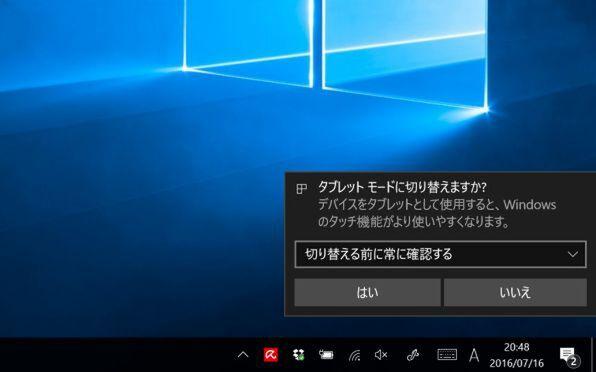Use Windows 10 back and forth between tablet mode and desktop mode
With these points in mind, let's configure the Start screen, desktop, and taskbar for your convenience.
It should be noted that the taskbar has an indicator of running apps, but the Start screen does not. If you're using Windows 10 in tablet mode, you'll find the tile and open it, whether the app is already running or not. For example, even if Word already has a file open to edit a document in Word, when you open Word from the start screen, the new screen appears. Even if there is a file already open, it will not return to the editing screen.

The start screen is just a screen for starting apps, and unlike the taskbar, it's not for switching between apps that are already running and those that aren't.
If you find this confusing, turn on the taskbar app icon display, which is off by default in tablet mode. Hidden is the default, presumably to enhance the app's full-screen feel so you can immerse yourself in the content. The presence or absence of the display can be changed in the setting system-tablet mode.
The Start Screen is more of a program launcher than a shell, in that it finds the app you want and launches it.
What kind of program do you have open now? Working with Windows is repetitive. I think the desktop taskbar has done a good job of supporting that task in the past, but in the future it can get a little confusing if you don't change your mind.
On a mobile notebook PC that is used while repeatedly sleeping and waking up, the operator has long forgotten whether or not a particular application is open. The reason why the manners around here are not well organized is that it is difficult for Windows, which is bound by the past, to divide it like an application on a mobile OS that tries to restore the previous state as much as possible as a history. deaf.